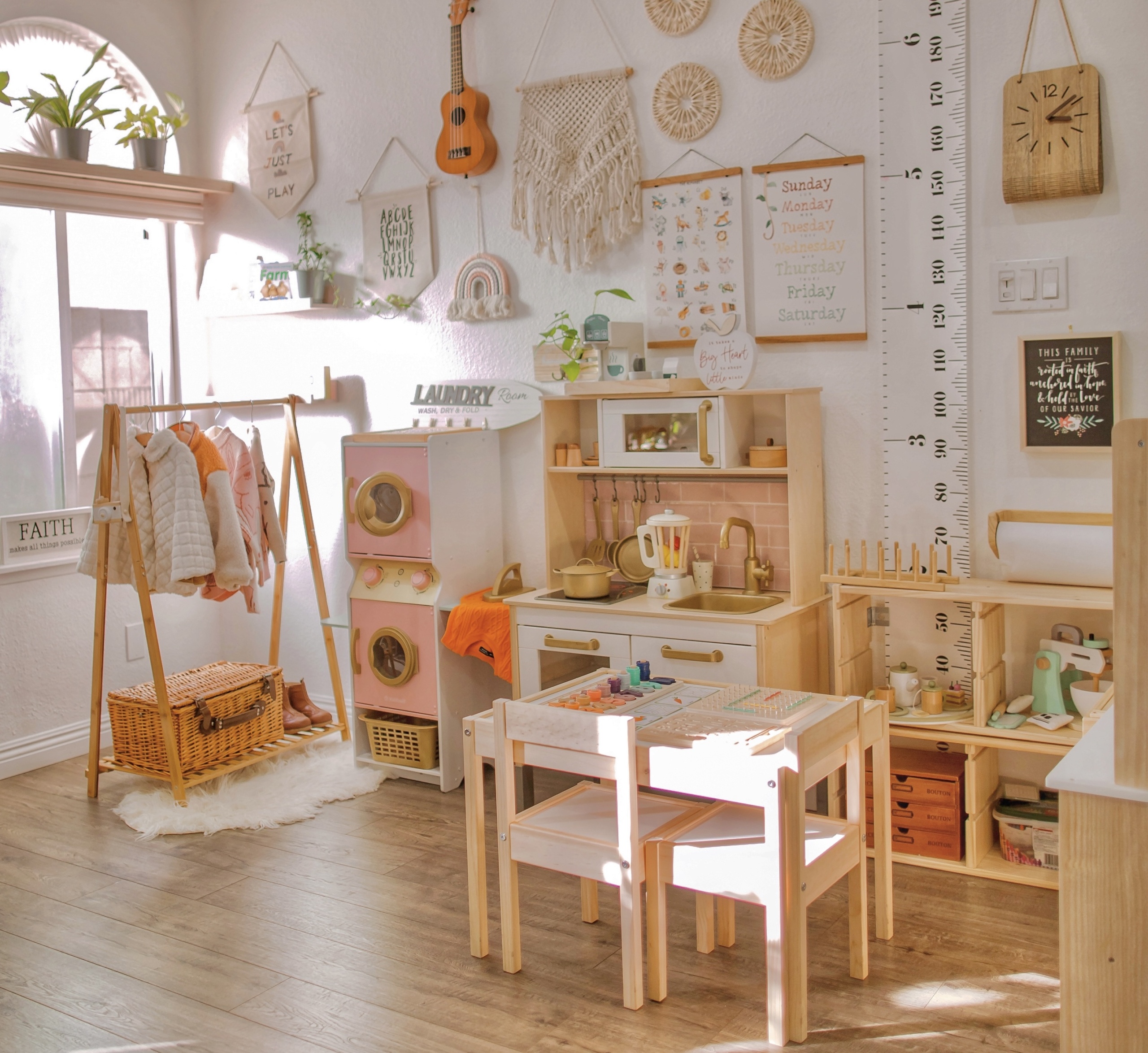
3-years-old is a turning point for many children. It’s the time when they shift from total dependence to gaining freedom to move around, reach and grasp objects, and adapt to new capabilities. Young toddlers strive to achieve their independence and a carefully prepared environment can assist them and set them up for success.
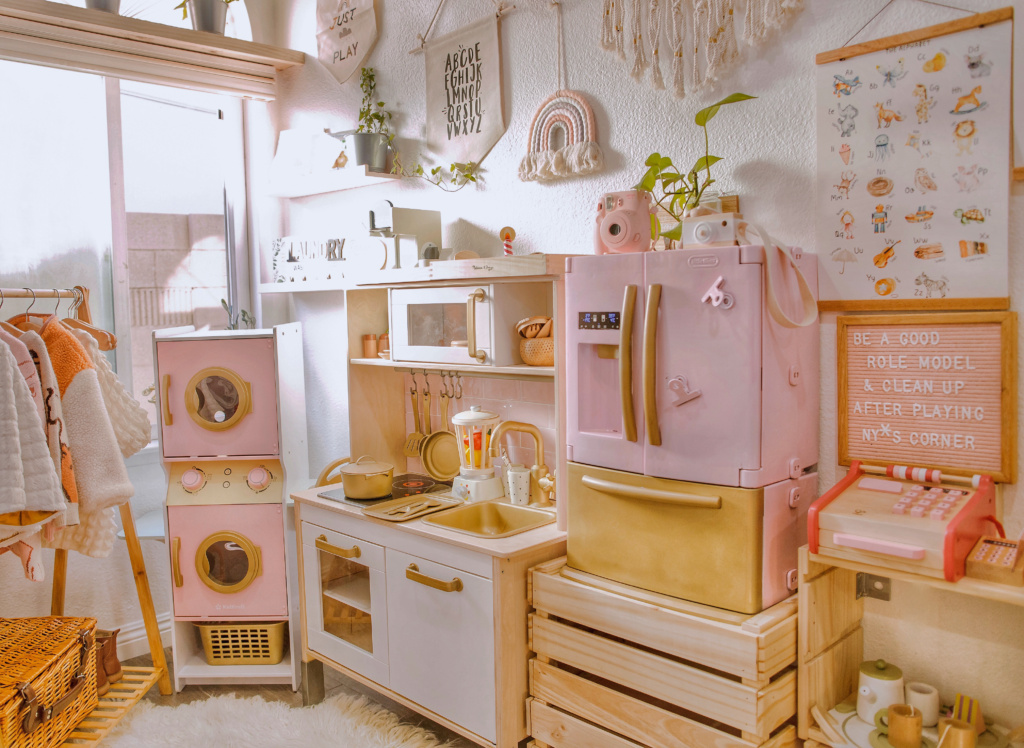
Encouraging order, independence, and self-motivation is fundamental to the Montessori approach. At Montessori school, carefully designed classrooms allow students to develop competence in caring for themselves and their surroundings. You can prepare your home in similar ways. Early childhood education starts at home and parents are the best teachers. But how can we make space for our children in our homes without the place becoming one giant toy bin? In this post I will share tips and tricks to help you take a Montessori approach when it comes to set up your toddlers’ play area.
What is a Montessori playroom?
A Montessori playroom is a carefully designed child’s environment that encourages independence and concentration. It is a clean, simple playing space with a carefully selected, limited number of age-appropriate toys.
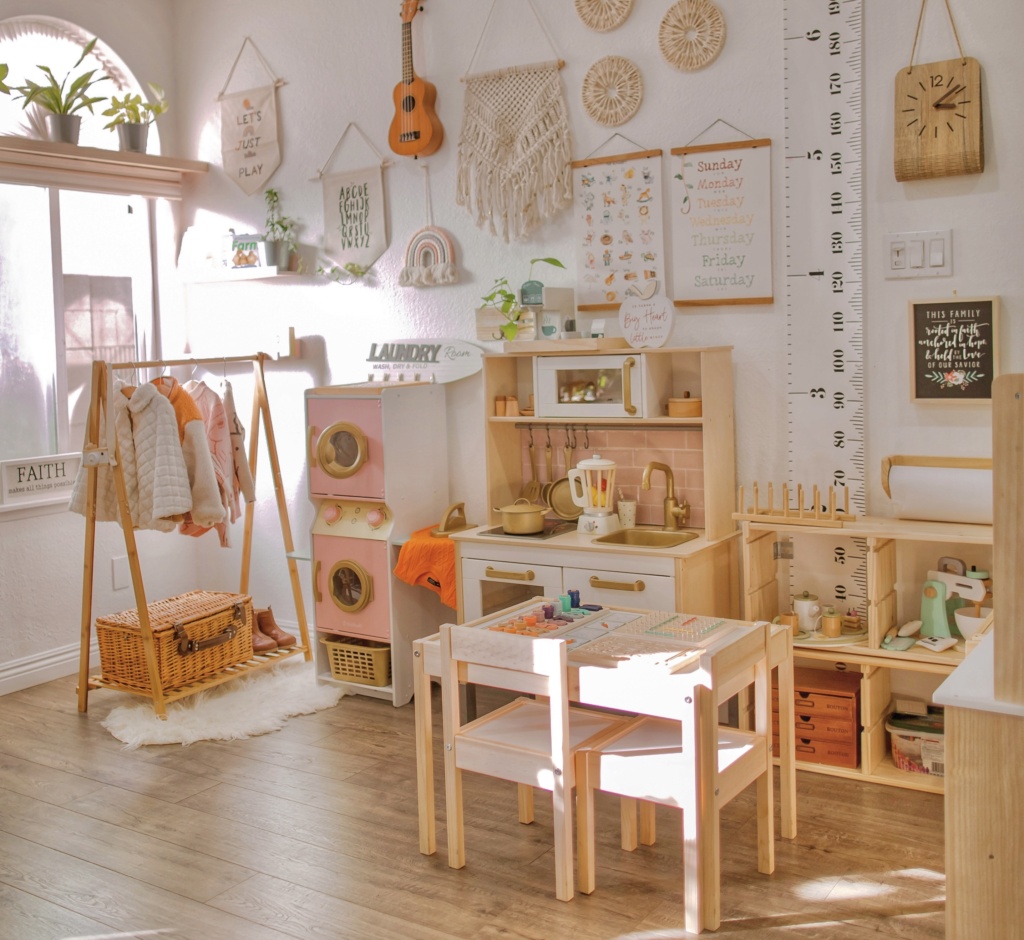
All the toys in a Montessori playroom are designed to help children develop skills like fine and gross motor skills. In this way, the Montessori playroom elevates play into more than just simple entertainment; it makes it engaging, too.
Why Montessori at Home?
The first 6 years of life are crucial. Almost all of a child’s brain growth happens within the first few years. Maria Montessori recognized that up until age 6 children are very impressionable, making early learning very important. She coined the term “the absorbent mind” because young children learn by soaking up information from the environment unconsciously and they learn very fast.
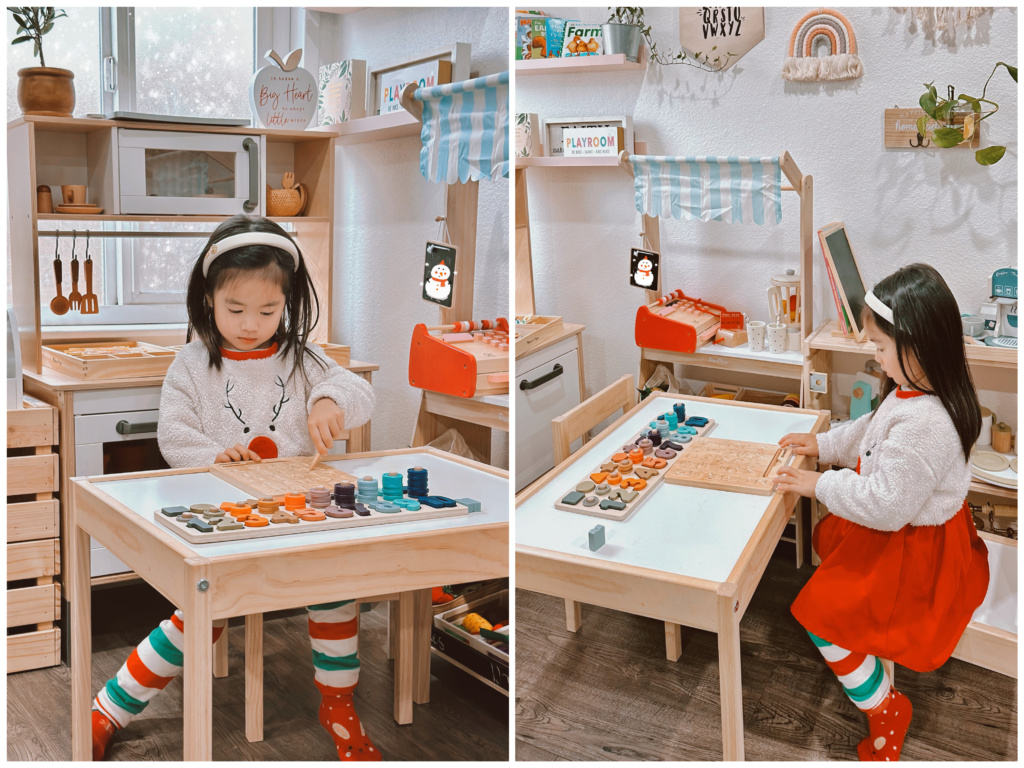
During this period, the impressions made on the child’s mind shape and form the child’s personality. This is why every parent should provide a home environment that is conducive to learning. With Montessori in the home, you’re offering your child a private education tailored for them.
Montessori Playrooms: the Basics
The Prepared Environment at Home
The foundation of the Montessori experience is the Prepared Environment. A Prepared Environment is one designed to follow the needs of the child. It is a safe place where children can touch, explore, use, and master the common objects they encounter safely on a daily basis. Children’s views are involved and respected in creating this environment.
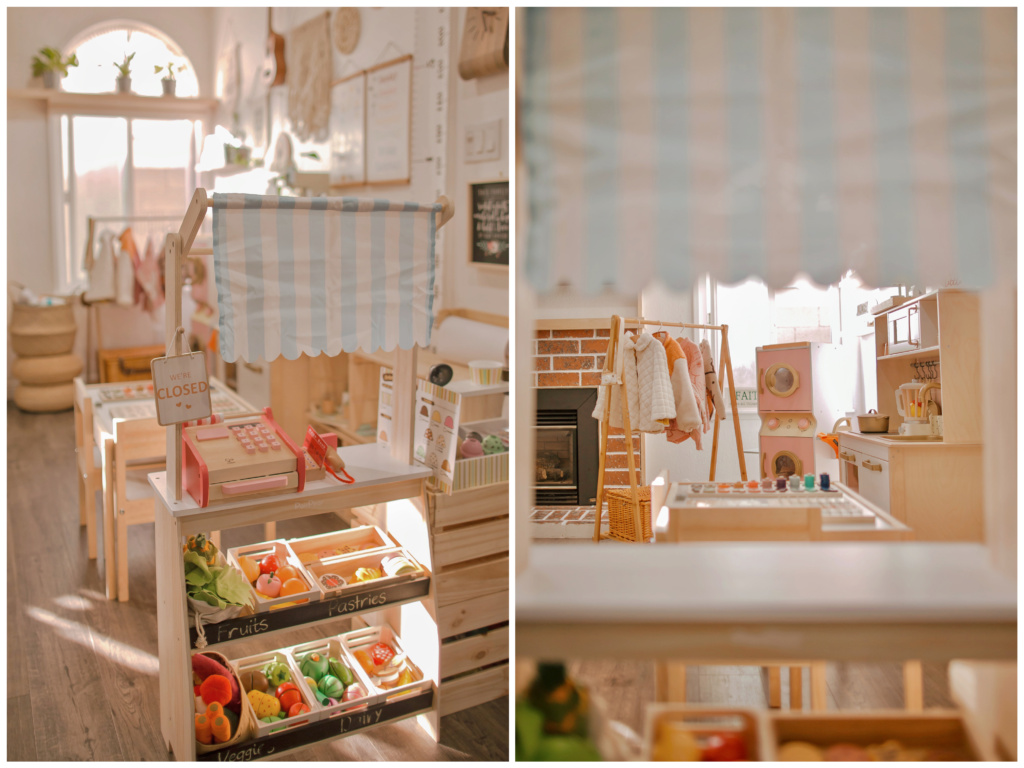
Montessori classrooms are designed to be places where children can explore and learn under their own direction. You won’t find rows of desks facing a teacher for a structured lesson plan. Instead, children in Montessori classrooms can move freely as their interests evolve.
Allow open space for movement
An open space in the playroom is great for developing gross motor skills. Allow them enough space to move around in, climb around, and explore. This sort of movement is actually essential for growing children.
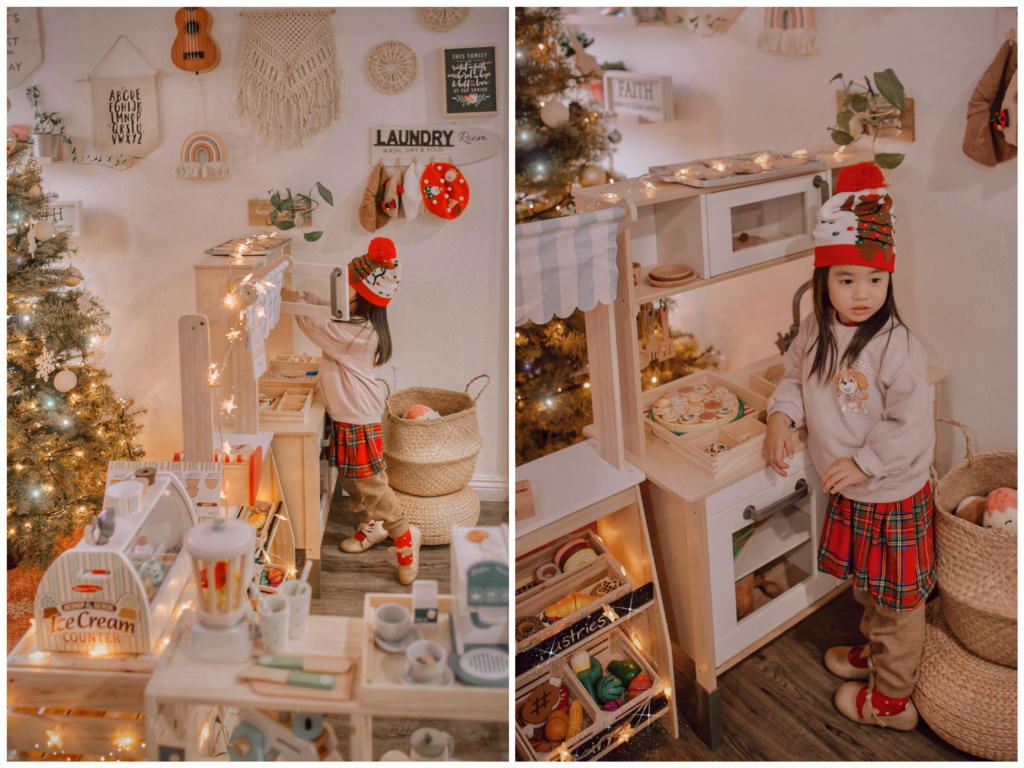
Open Shelves and Accessibility
“Help me to help myself” is one of Montessori’s best-known quotes, and it clearly reflects one of her guiding principles.
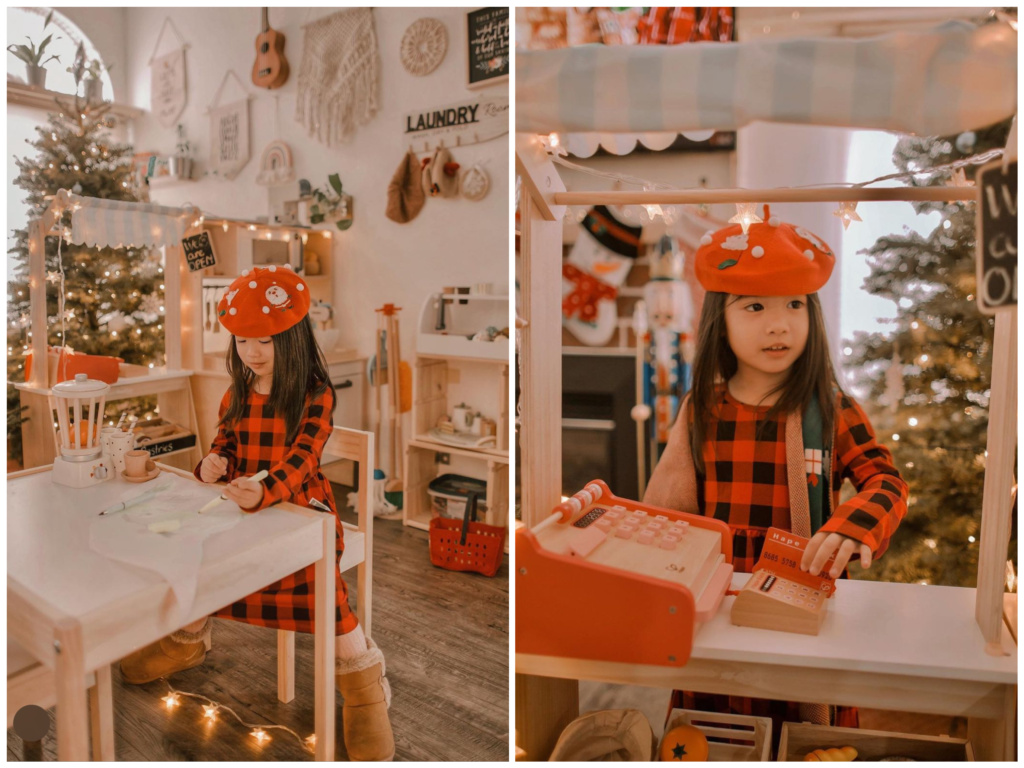
Montessori believed that children should be allowed to engage with whatever was of interest to them, for as long as they desired. It was therefore important for them to be able to access their play objects by themselves. This is why many Montessori-style playrooms feature Montessori open play shelves that allow you to easily display all of your child’s toys, and each section of the shelves focuses on one activity only.
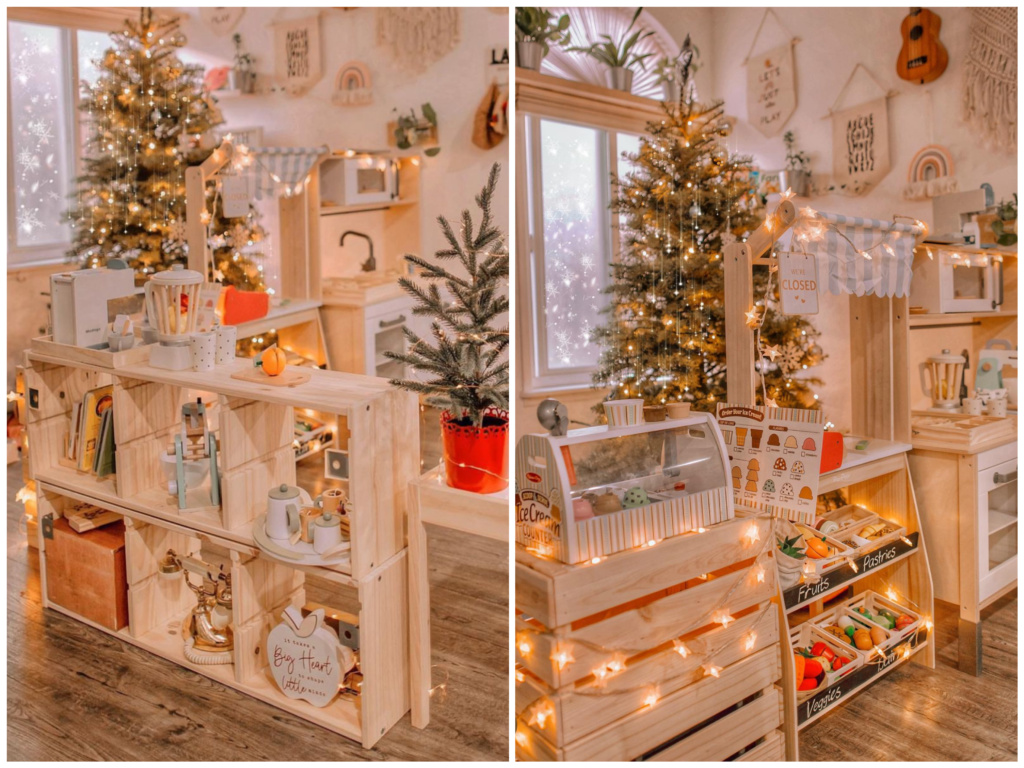
Toys need to look appealing, and kids need to clearly see what they are and how they can engage in creative play with them. We used the Ikea shelf for this concept and took unused toys to store in the garage.
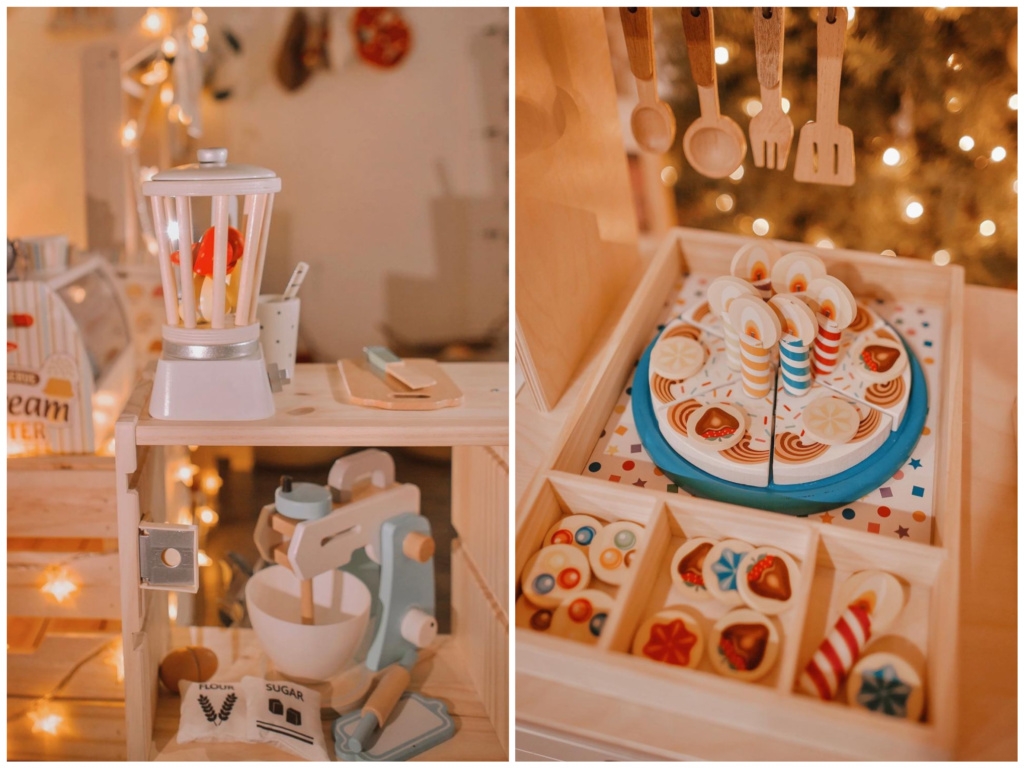
Montessori Materials and Activities
Although learning through play is an integral part of the Montessori philosophy, fancy toys are not necessary to create a Montessori home. Any simple practical learning materials that help young children develop sensory skills, fine motor skills, gross motor skills, language, and math can be incorporated in Montessori classrooms and playrooms.
Wooden Toys
Most Montessori playrooms almost exclusively use wooden toys. Of course, wooden toys and toys made from natural materials are environmentally friendly, beautiful, and long lasting. However, the main reason why Montessori playrooms try to stay away from plastic, battery-operated light-up toys that make a lot of noise is that the latter is great for keeping kids entertained, but the former keeps them engaged.
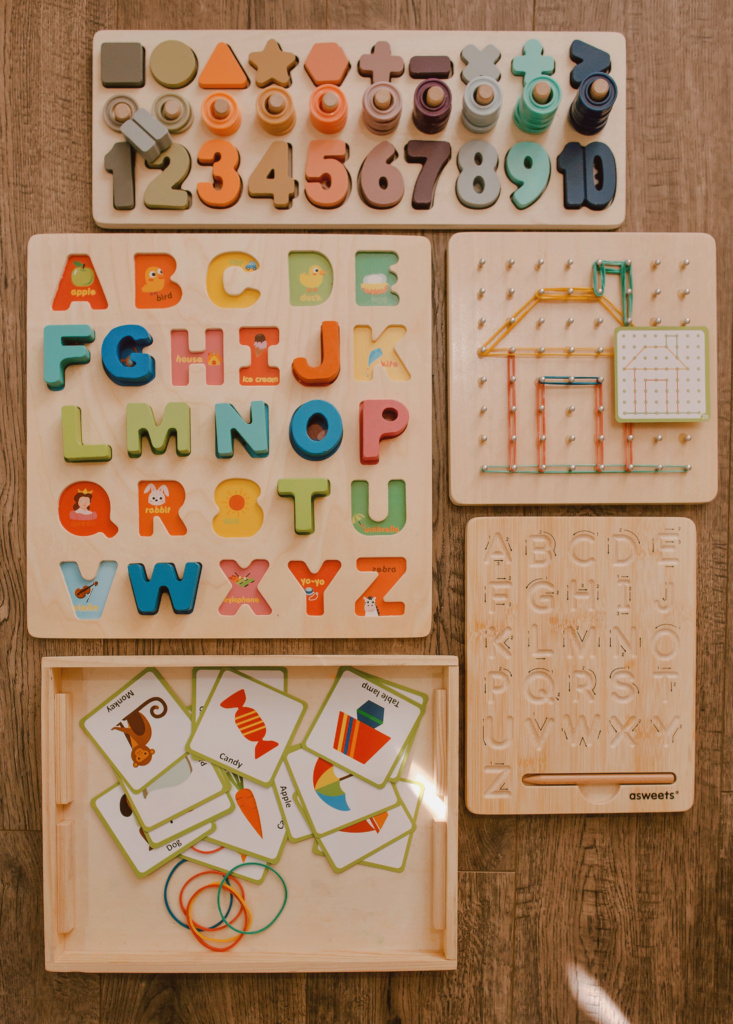
Montessori-inspired toys are not just about distraction; their main aim is to promote engagement and to help your child develop specific skills, such as fine and gross motor skills, or spatial and visual discrimination skills.
Open-endedness and Purposeful
One of the key principles of Montessori education is that children should be provided with open-ended toys and activities, meaning those that enable them to use the same resources in many different ways.
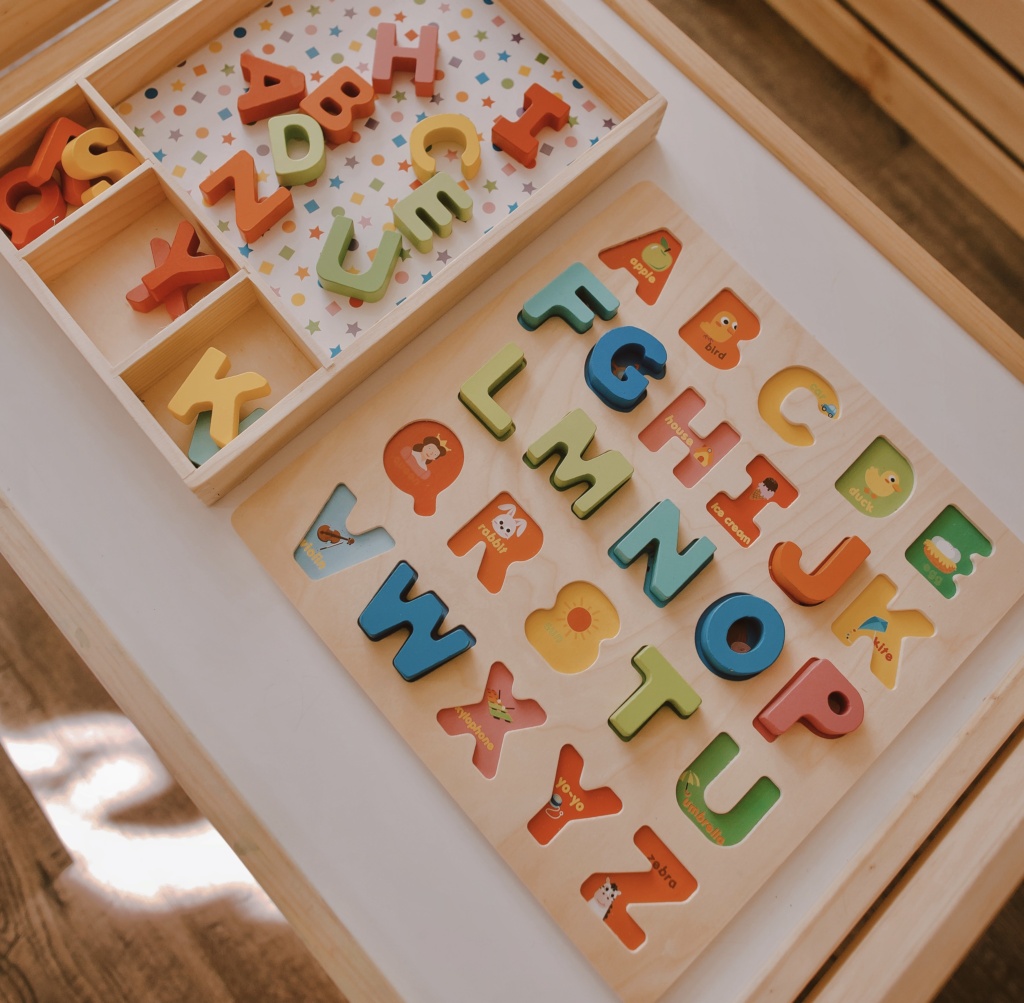
Open-ended toys encourage your child to use their imagination and develop their creativity and critical-thinking skills. Wooden blocks, wooden puzzles, and wooden geoboards are a good example of a simple and open-ended Montessori-inspired toy. Kids can use them to learn about colors and shapes, or build anything that they can imagine!
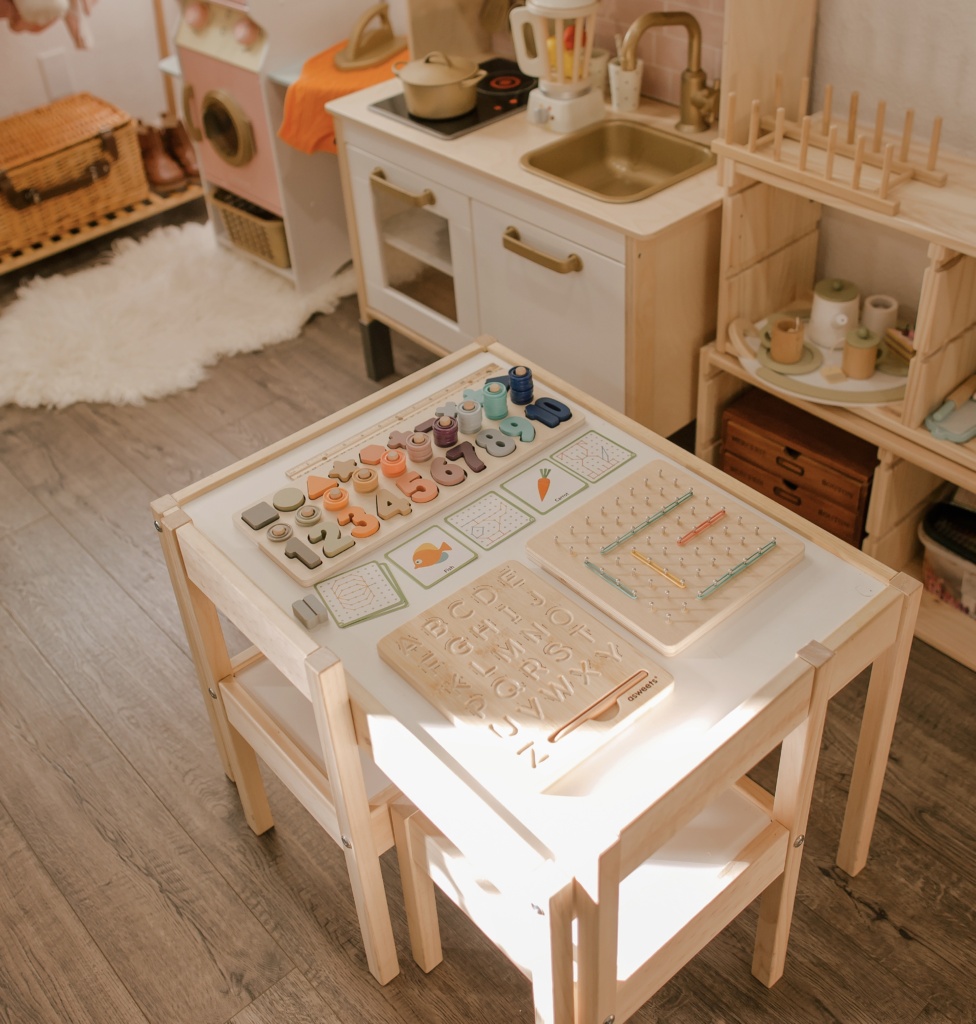
For example, Panda Brothers’ Wooden GeoBoard with 64 semi-embedded nails on a board measuring 8×8 inches, 30 double-sided pattern cards, and colorful rubber bands is a great learning tool to teach toddlers about geometric shapes and patterns.
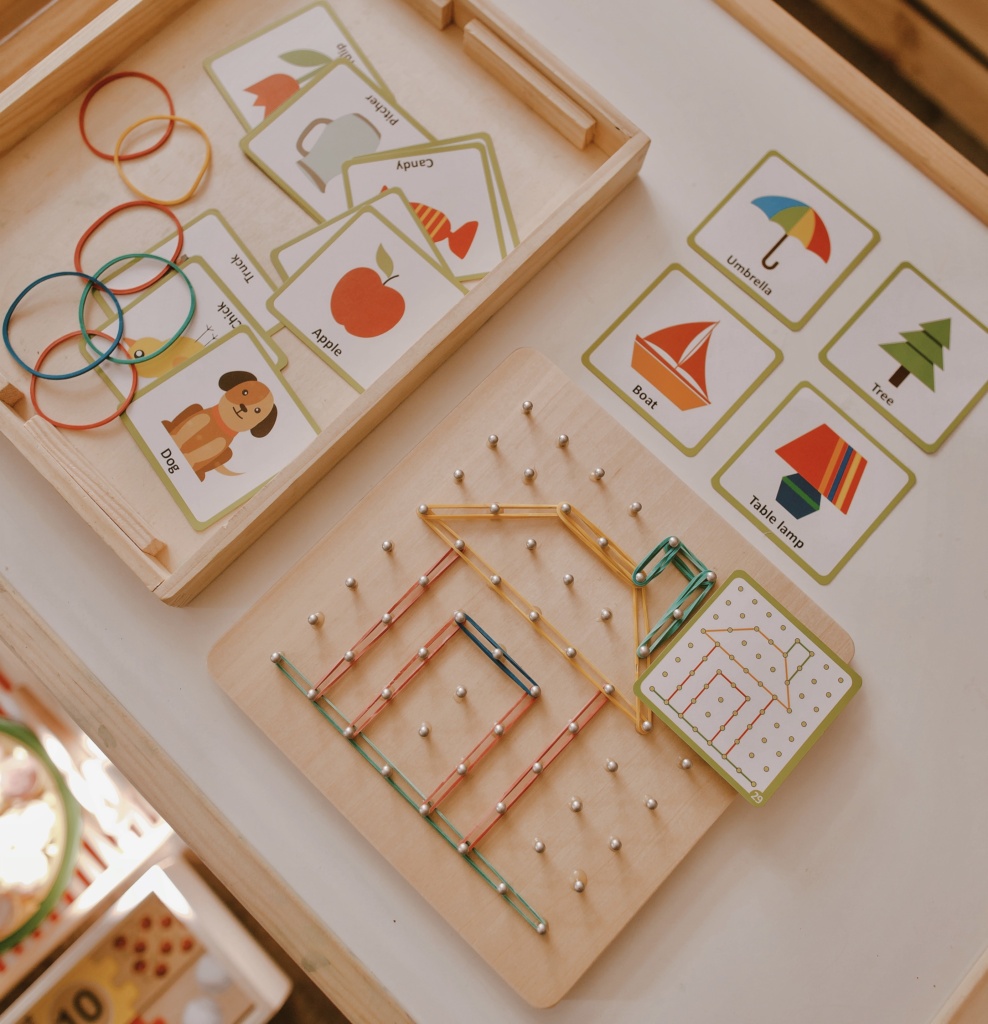
Melissa and Doug’s Wooden Number Puzzles help young kids get acquainted with numbers and counting. By matching these wooden puzzles in pairs kids can master numbers easily; groups of objects illustrate number 1-20 and the puzzles are self-correcting (each piece has only one match that fits) so children can play independently and learn at the same time. It’s great for helping kids learn matching and counting skills.
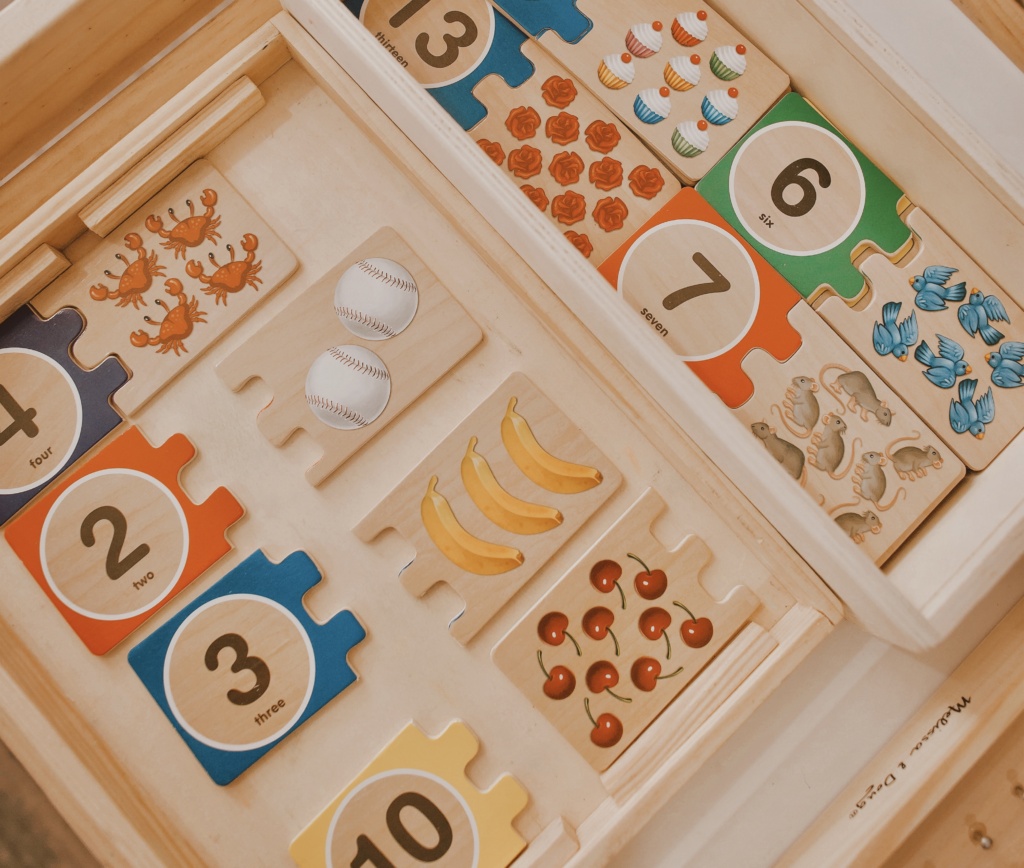
We also love our wooden count sort stacking tower with colorful number-shaped blocks and rings. It offers many activities including sorting the rings according to colors, counting the pieces, and stacking the blocks. It’s good for developing early sorting skills, teaching colors and numbers, promoting hand-eye coordination, fine motor skills, and problem solving skills.
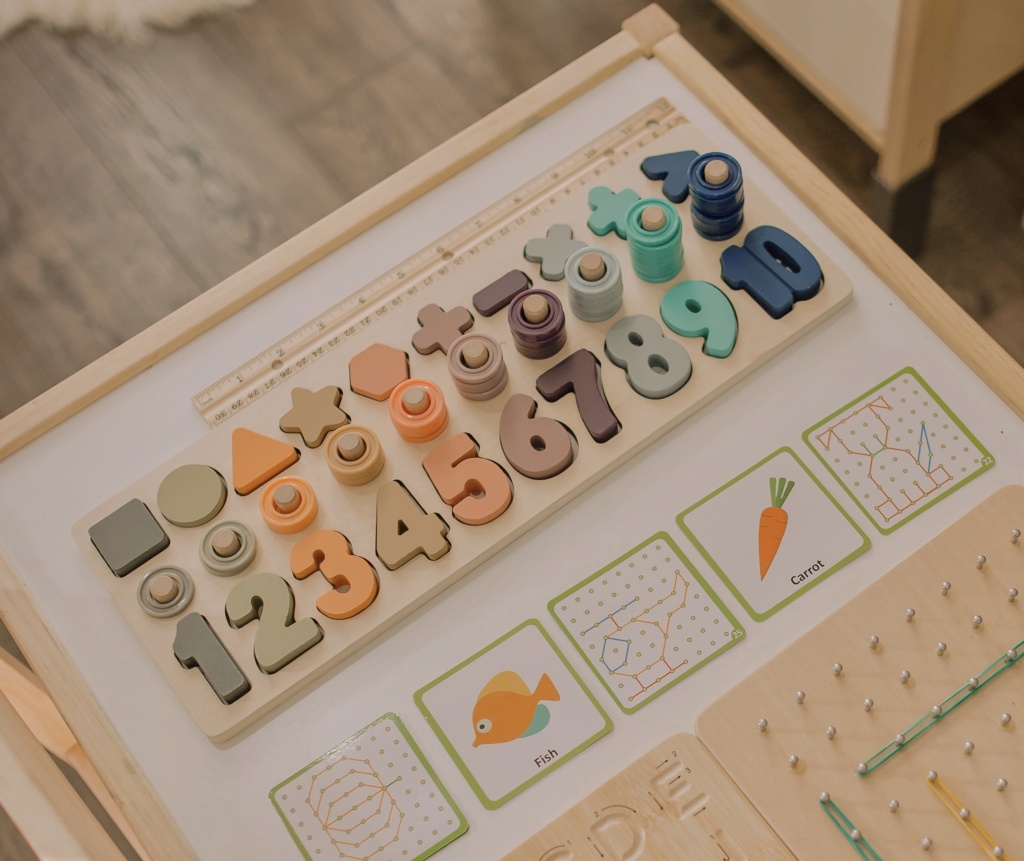
Through these purposeful toys, young children develop sensory skills, fine motor skills, gross motor skills, language, and math.
Montessori Trays
Montessori trays organize activities and foster a sense of independence and order. These trays are easy for a child to carry and include all the materials needed for an activity. Montessori trays and baskets offer variety without overwhelm and clutter, allowing for focused, uninterrupted play.
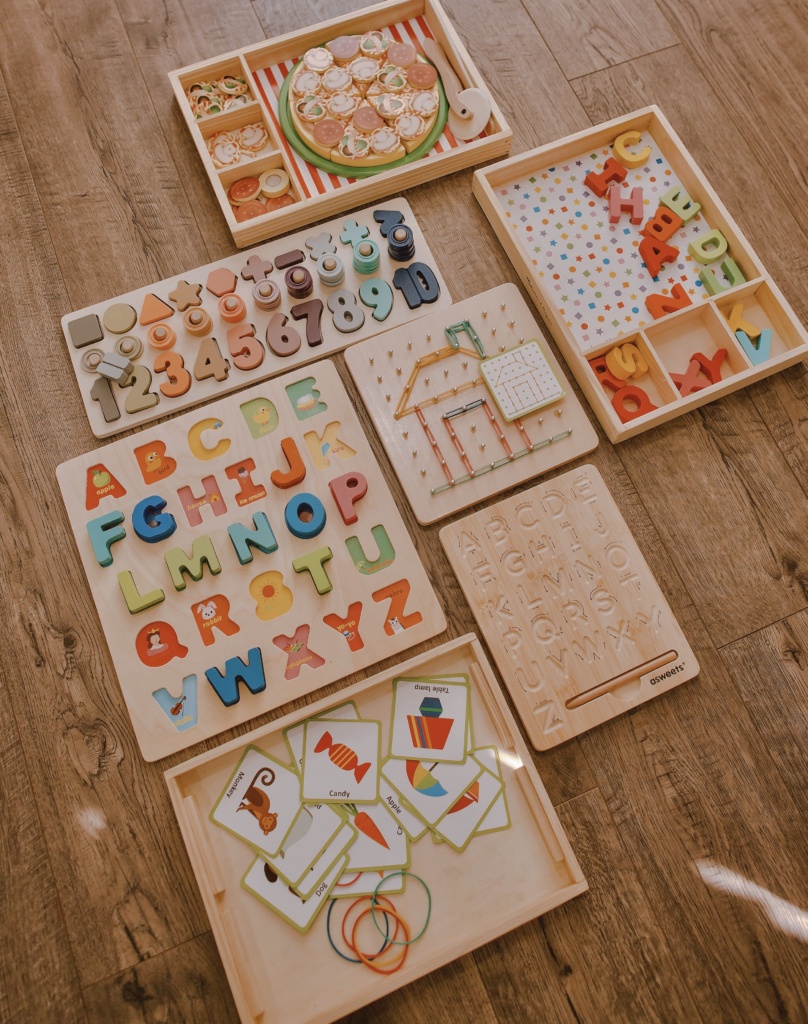
When an activity is organized and presented in full to a child, they know where things are when they start and how to neatly put each item away. This also encourages your child to work on one activity entirely and then put it away before beginning another.
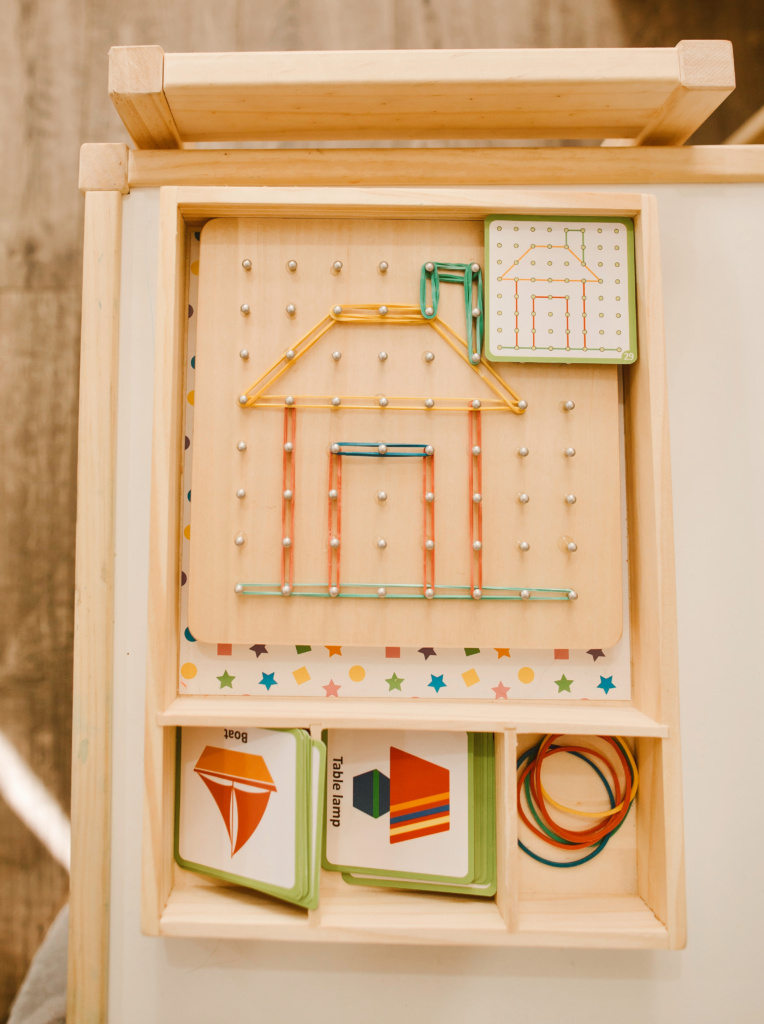
Montessori trays and baskets allow for curating toys and activities based on your child’s interest and skill level. Instead of bins and buckets filled with endless clutter, having fewer, more complete tasks, projects, and activities allows for more purposeful and focused play. As your child’s interests and skill levels change, you can swap out trays to introduce new things.
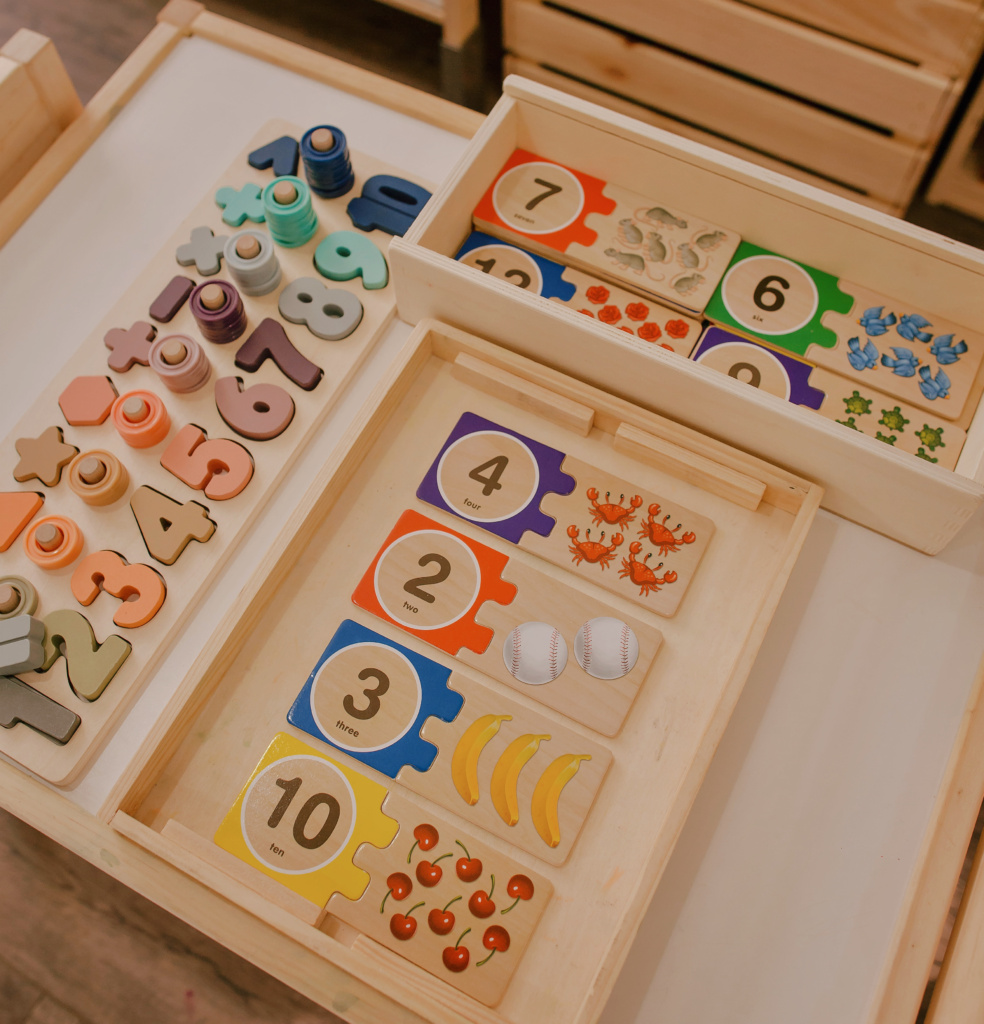
You can choose just about any game, lesson, task, or theme for your Montessori tray. The goal is to make sure there is a clear objective for each tray and that they are complete, meaning that everything the child needs to do the activity is on the tray.
Toy Rotation
According to most Montessori guides, the optimum number of activities to have in the playroom is 8-10. The logic here is pretty simple: Since each activity in your child’s play space should be visible at all times, they will more actively engage with their toys rather than forgetting about them when they’re stuck at the bottom of a toy box.
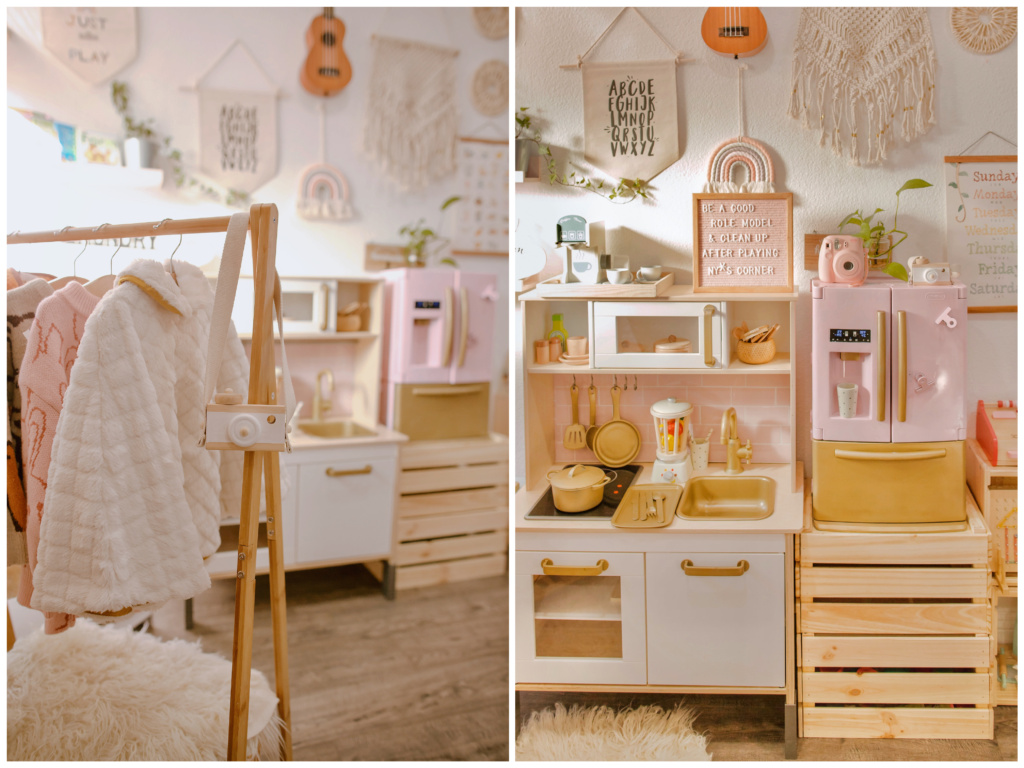
Try switching out your activities weekly! This will keep your children excited about the toys available to them and allow them to focus on a few things and master them instead of jumping around from toy to toy and activity to activity.
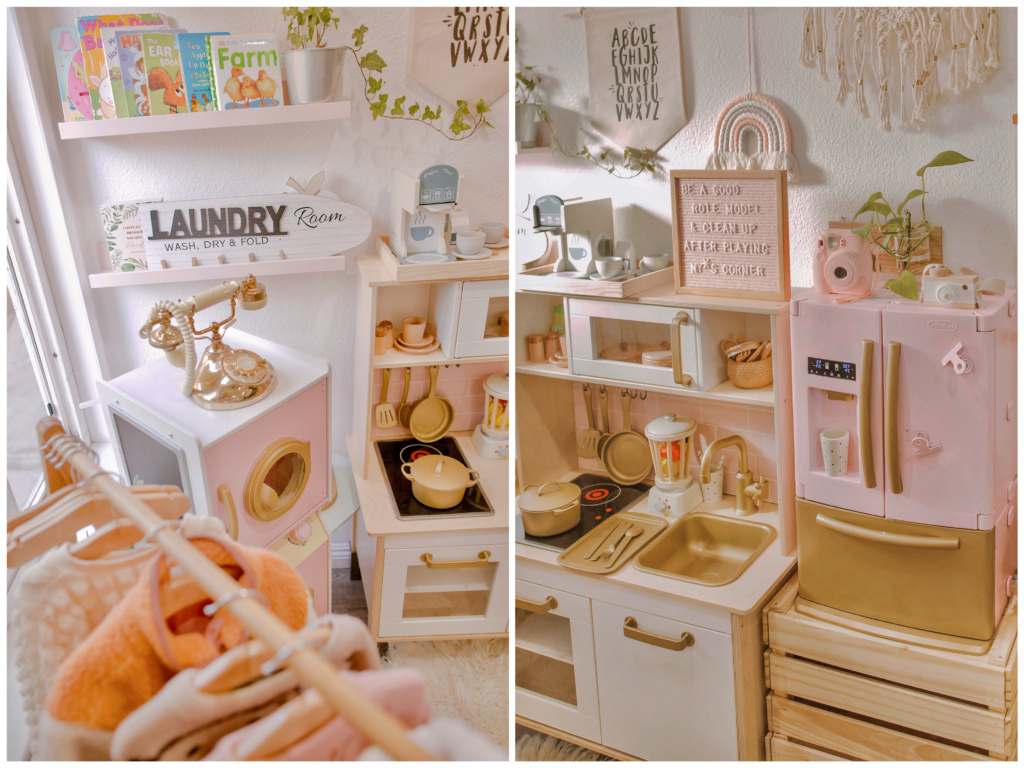
Order, Routine, and Cleanliness
Montessori talked a lot about “sensitive periods”, a specific time where a child is attracted to something and eager to learn about it. There is a sensitive period for order in children in early toddlerhood all through the age of five. This is when they love routine and repetition.That’s why in a Montessori-style playroom, each object has its own place.
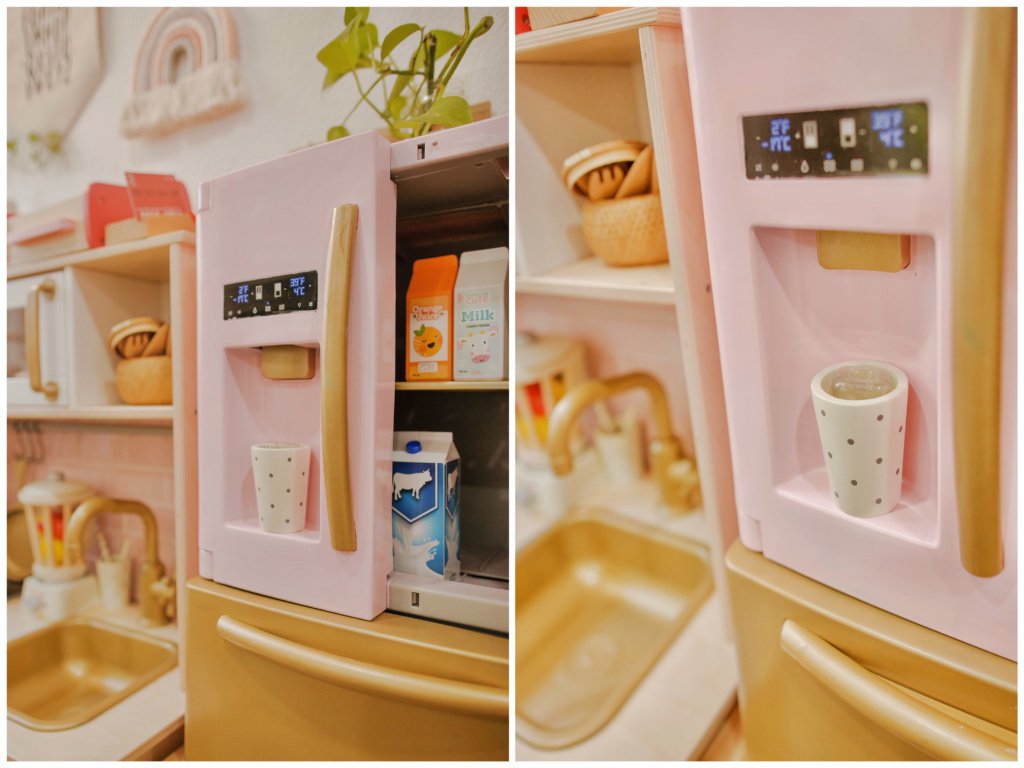
Your Montessori playroom should support toddlers’ needs for order by assigning everything a specific space where it should go. When kids know exactly where on the shelf every toy belongs, they will be more likely to put them back in the same spot once they are done, and possibly even enjoy doing so.
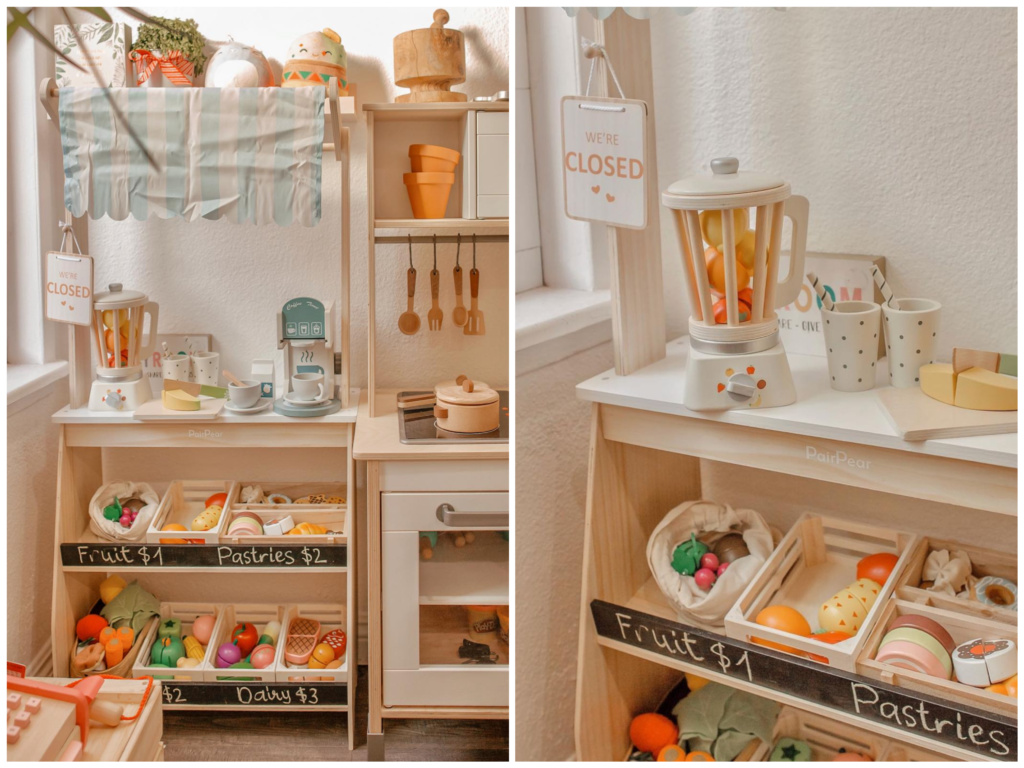
Order and routine are a great way to teach your child how to clean up after themselves. Plus, you won’t have a messy playroom with toys scattered all over the place!
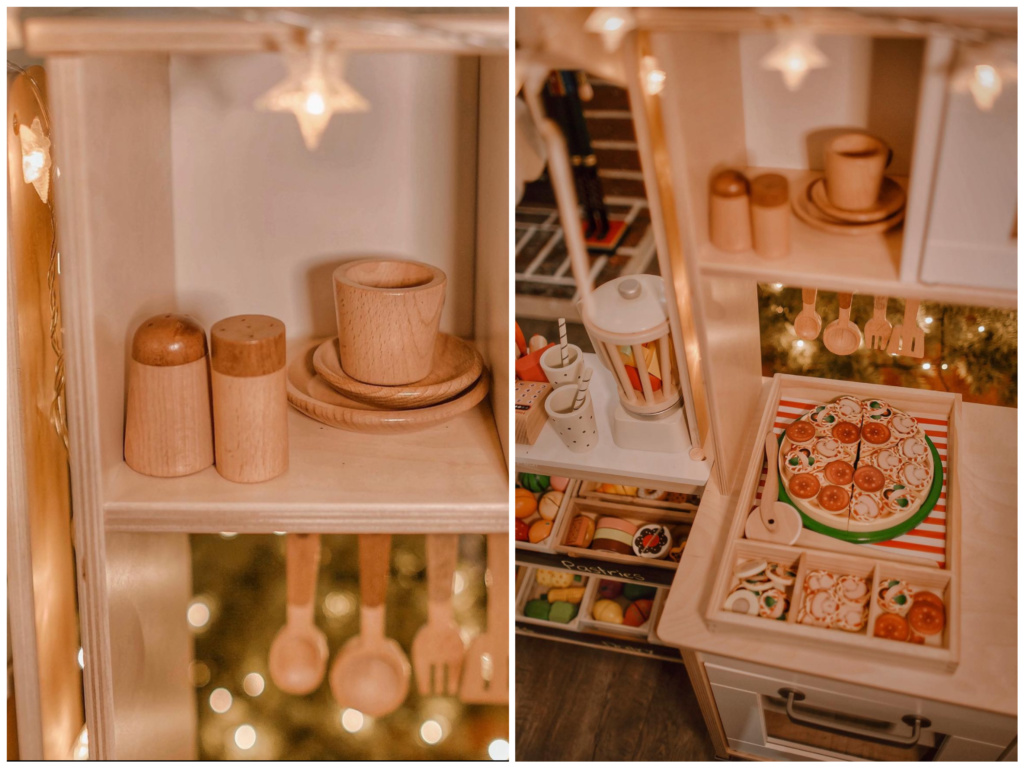
A Cozy Space
Creating a cozy space for your little one make their space comfortable and enjoyable to be in. Use a nice, calming color on the walls, and perhaps have the place bathed in natural light.
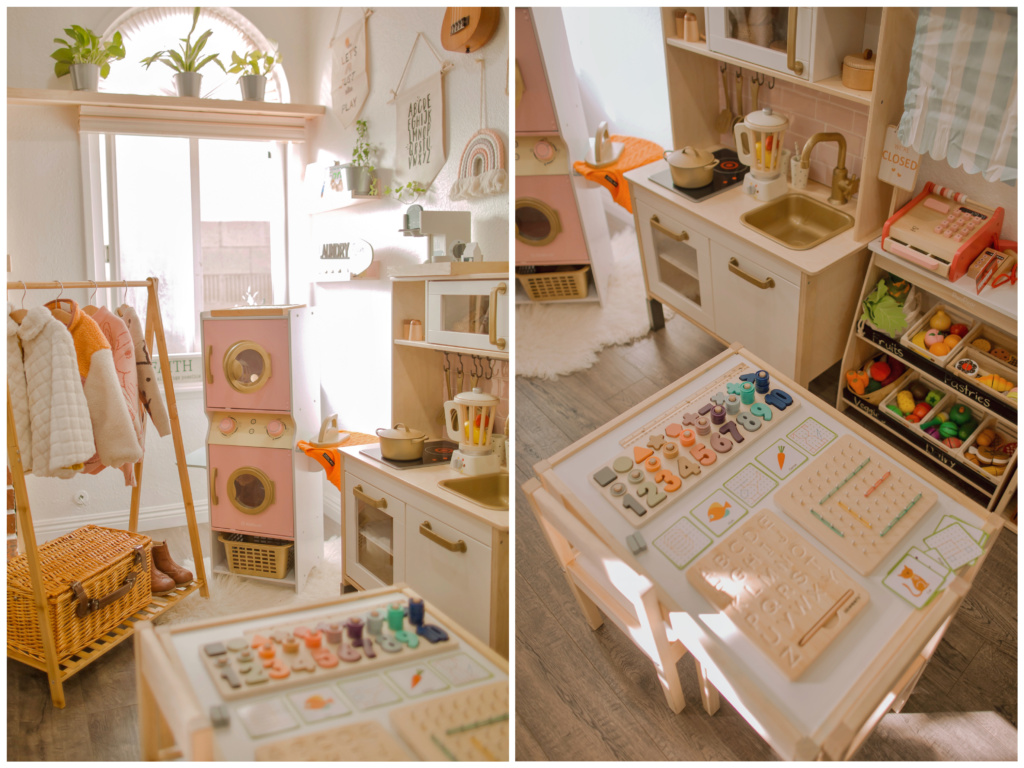
Carefully choose Montessori furniture that works well in the playroom can help your little ones relax and develop essential skills as they explore their environment too. For example, whether you’re working with a large or small spare room, tables and chairs are a staple for any playroom. Kids can use them for craft projects and putting together puzzles. Not to mention, a playroom table is nice for having a place to enjoy an afternoon snack and juicebox! Functional and fun are necessary components when it comes to making the playroom comfortable and cozy.
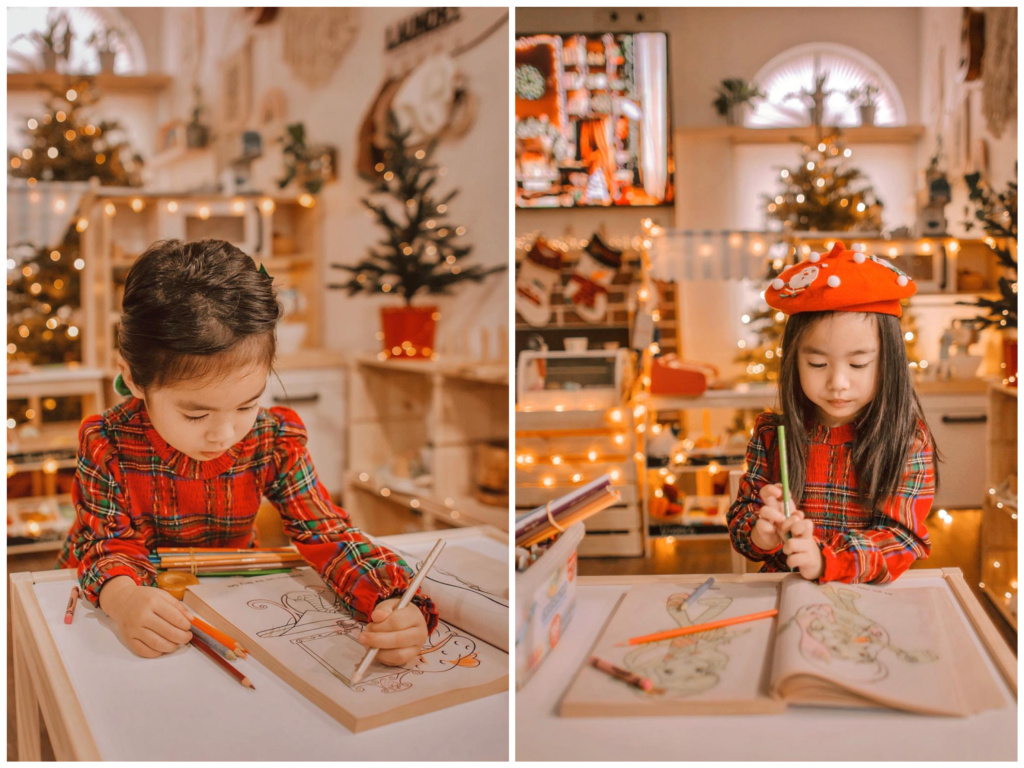
While Montessori spaces are uncluttered, that does not mean bare walls are preferred. Displaying artwork that ties in with your child’s current interests can help inspire their learning.
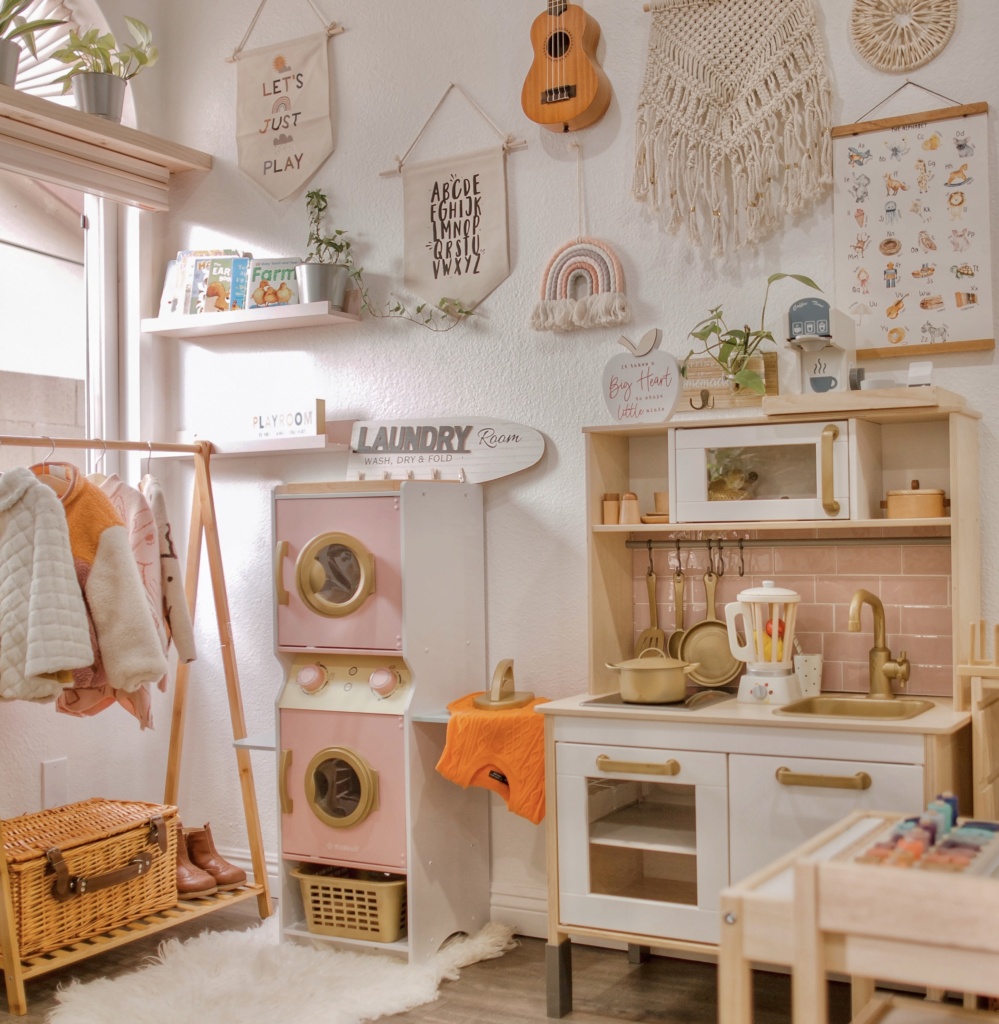
Montessori playrooms are simple, organized, and truly child-friendly. A simple space also allows them to deeper explore their toys and activities without distraction. By creating a cozy space that is welcoming to your little ones, they will be both comfortable in their space and ready to learn!
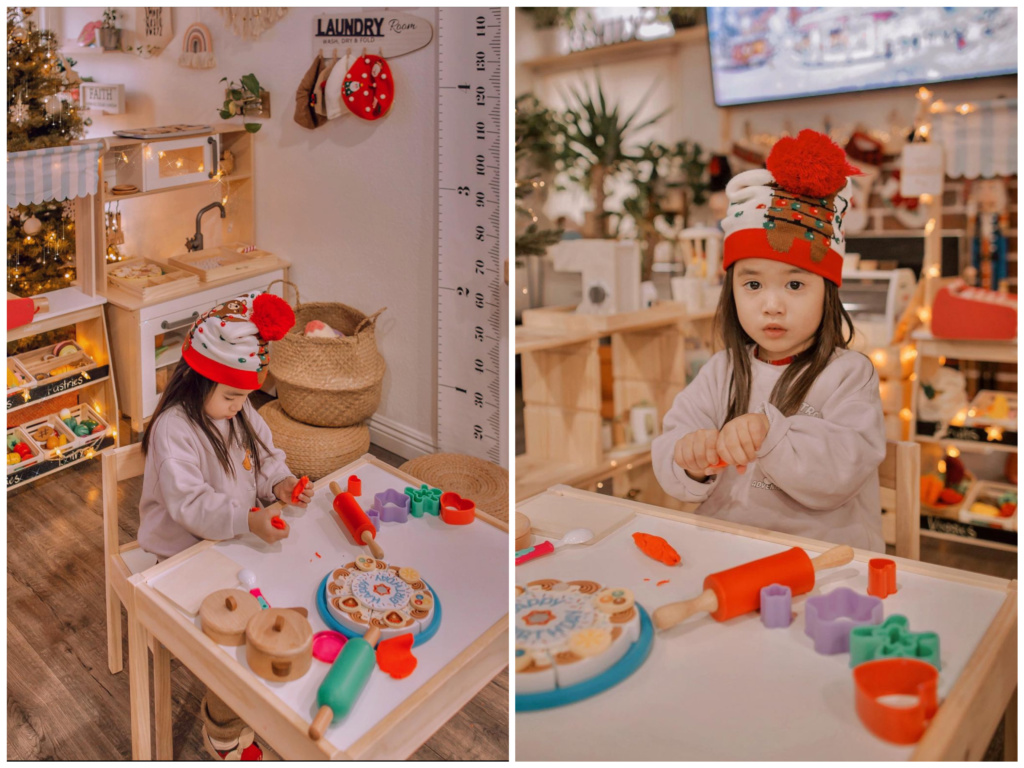
The good news is that when creating your child’s Montessori playroom, you can pick and choose what works for you.There is no hard and set rule for setting up your Montessori playroom. Just remember, the essence of the Montessori approach is to help children develop a love of learning so they can become self-sufficient and self-motivated.
“The goal of childhood education should be to activate the child’s own natural desire to learn.” MARIA MONTESSORI

